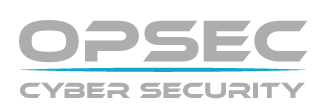The role of the Quantified Self in a corporate environment and what it means for IT
June 9 2018People are often happy to share their health data – friends’ running routes being published on social media is a common sight. But how would you feel about your employers having that data? And if you’re on the IT side; how would you feel about having to store and protect that data?
Tracking workers is nothing new; company-owned vehicles as well as devices such as laptops and mobiles are often fitted with GPS, while devices usually have at least some kind of activity logs to ensure security is maintained. However, these processes are generally understood and have a strong legal precedent. Tracking employees through wearables is new territory, and spans not only location but health and lifestyle, blurring the lines between business and personal life.
Wearables in the workplace: Employees want to be tracked (if there’s something in it for them)
A number of startups – including Humanyze, OccupEye, StatusToday, and Unifi.id – have popped up in recent years, all dedicated to keeping tabs on workers’ location and productivity. But wearable devices on the corporate networks can provide not only location but real-time health information. Information which the user may not want their employers to have access to.
An accurate number of corporate wearables – as in wearables given out by the organization – is hard to know, but Tractica predicts there will be 75 million wearables within the workplace by 2020. Whatever the actual numbers, the mix of business and health data is definitely already happening.
A 2017 study by The Society for Human Resource Management found 8% of US companies offer fitness tracking bands to employees. Insurance companies are using health data from fitness trackers to reduce premiums and ensure more accurate coverage, and several firms now offer employees fitness trackers as part of their corporate wellness programs, including SAP, IBM, Autodesk, BP, Appirio, and Accenture. These corporate wellness programs vary depending on the company, but can track areas such as steps, calories, and stress/relaxation.
To continue reading this article register now
Learn More Existing Users Sign In




